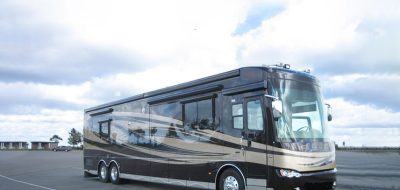Fuel consumption trip computers are now commonplace in many automobiles, trucks and recreational vehicles, but are they accurate? Do they really display the actual miles per gallon that you have been achieving?
Well, yes and no. The auto industry’s O.E.M. standard on-board computer display is not a scientific measuring device. Some of its input data comes from the E.C.M. (engine control module) through the OBD (On-Board Diagnostic system) and calculates the requested information to be displayed.
Regardless of marginal error, these onboard readouts can be very helpful. While 100% accuracy is not attainable, the calculation repeatability is quite good. Therefore, generally they are a reliable fuel consumption indicator and certainly far more accurate than your fuel gauge.
There are two MPG (miles per gallon) readings that people primarily use: instant and average. Instant is exactly that, nearly real-time MPG. I used the phrase “nearly real time” because the data is buffered to create a delay that makes the display readable. Without such a feature, the display would jump from one number to the next so rapidly it would be unreadable. For this reason, the instant fuel consumption readout may be limited in value.
The MPG average gives a reading of the average fuel consumption in a specified period. This is started by resetting the trip computer. This readout item is probably one of the most informative as it shows a result based on an entire trip. That could be an 80-mile local camp outing or a three-week journey across the country. This fuel performance data is far more valuable as it deals with the overall average of the ups and downs of your RV’s real time driving.
As well as providing a host of statistical data of your RV’s performance, an onboard trip computer can save on fuel. It does this by merely being present and within your view and control. Most people try to save on fuel consumption by speeding less, reducing the acceleration rate, or just coasting further.
These handy devices are standard equipment on many automobiles, trucks and motorhomes. For those that do not have one, aftermarket trip computers are available. A popular choice for motorhomes is the TripTek that can display an overlay right on your back up monitor.
So, if your rig does not have a trip computer, perhaps you might consider such an addition. If it already does, then maybe you can try and increase your average MPG that you achieved on your last outing. Either way, this may make fuel saving fun. Enjoy.







Paul Kelly
both my vehicle read about 1-2 mpg over the true mpg